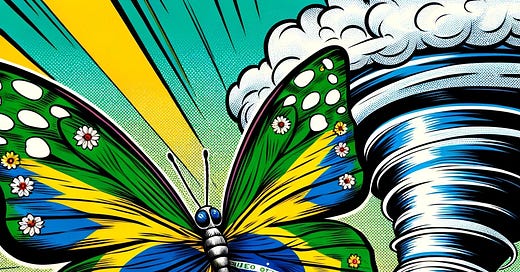Dozens of scientists were on the edge of their seats. Hundreds of eager onlookers from the general public listened intently to every word flowing from Edward Lorenz.
The American Association for the Advancement of Science (AAAS) had booked its annual meeting in DC for 1972. There was always plenty of enthusiasm from meteorologists, mathematicians, physicists, and experts in other fields, but this year’s talk on chaos theory, a newly budding field, attracted a more sensational and diverse group than usual.
Lorenz began to describe how an action as simple as a butterfly flapping its wings in the Amazon rainforest in Brazil could cause a tornado in Texas. In fact, this was the centerpiece of the title of the lecture:
"Predictability: Does the Flap of a Butterfly's Wings in Brazil Set off a Tornado in Texas?"
Like a lot of stunning discoveries and sensational ideas, chaos theory came about because of meticulous work. While studying weather models on early computers in the 1960s, Edward Lore…
Keep reading with a 7-day free trial
Subscribe to Goatfury Writes to keep reading this post and get 7 days of free access to the full post archives.




